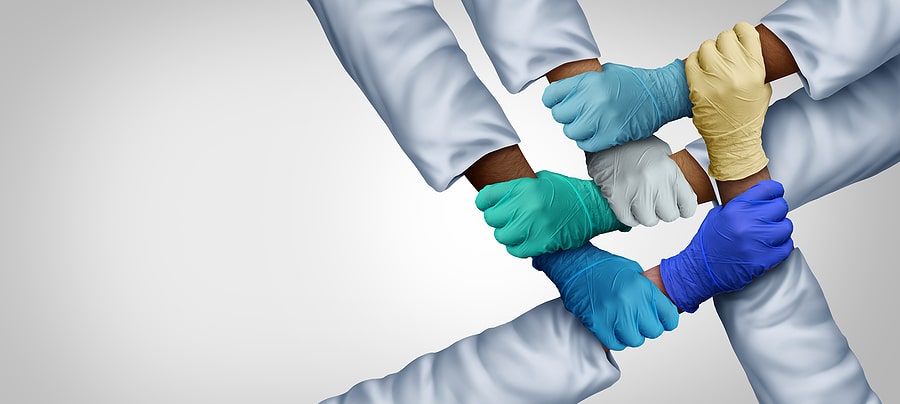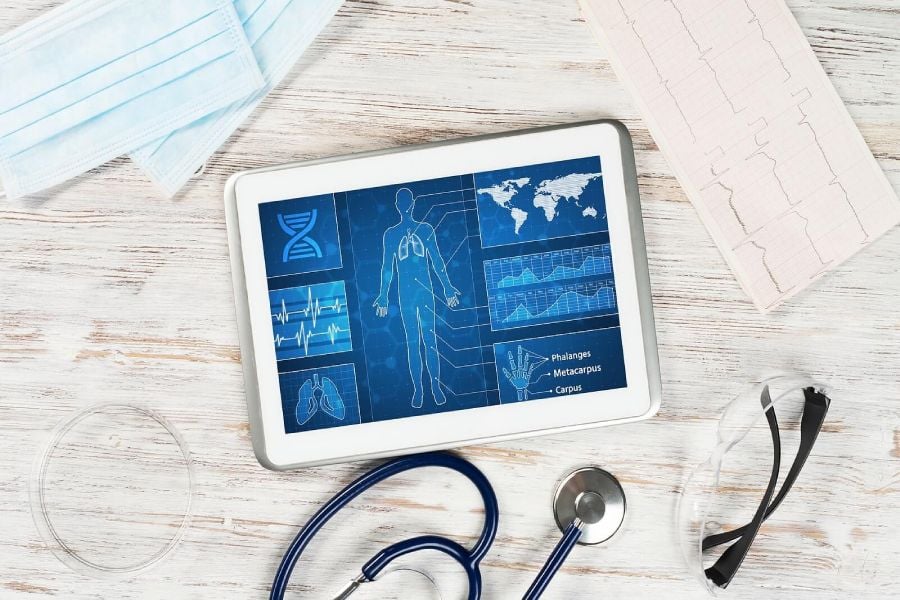What Is the WTC Health Registry

How Is It Different From the WTC Health Program?
In the two decades since the 9/11 terrorist attacks in Lower Manhattan, at the Pentagon, and in Shanksville, Pennsylvania, researchers have sought answers to questions about the long-term health impacts of exposure to toxic materials at the attack sites. At the same time, the federal government has worked to ensure that impacted individuals have access to health care and monitoring for conditions linked to those exposures.
Two different but related programs manage the research and health care services: the WTC Health Registry and the WTC Health Program.
Below you’ll find information about the WTC Health Registry and the WTC Health Program.
If you survived or worked in cleaning up after the 9/11 terrorist attacks and now suffer from a medical condition, an experienced 9/11 benefits lawyer can help you obtain assistance from federal programs established to pay for your care and compensate you for the harm you suffered. CONTACT a skilled attorney online or call us at 855-353-4907 today for a free consultation.
What is the WTC Health Registry?
The WTC Health Registry is the largest registry in U.S. history to track the mental and physical impacts of a man-made or natural disaster. The New York City Department of Health and Mental Hygiene and the federal Agency for Toxic Substances and Disease Registry (ATSDR) created the Registry to track the long-term health effects of exposure to 9/11-related toxins, principally the dust plume caused by the collapse of the World Trade Center towers in Manhattan.
Funded by the National Institute of Occupational Safety and Health (NIOSH) since May 2009, the Registry has a dedicated research unit within the NYC Health Department’s Division of Epidemiology.
Wave 1 Survey
The Registry started in 2003-04, when individuals who lived, worked, or went to school in the disaster area in Lower Manhattan, or were involved in the rescue and recovery efforts, participated in a voluntary health survey referred to as “Wave 1”. The Wave 1 survey questions sought information helpful in comparing the physical health of individuals exposed to the toxic dust at the World Trade Center site, to that of the general population.
From the information provided by survey respondents, researchers found that:
- More than 71,000 people voluntarily enrolled in the Registry. Of those, more than 43,000 were occupants of the buildings or passers-by in Lower Manhattan, south of Chambers Street. Another 15,000 enrollees lived in Lower Manhattan, south of Canal Street.
- Approximately 3,200 enrollees were children or staff at K-12 schools south of Canal Street.
- Around 31,000 respondents worked as rescue, recovery and cleanup workers, and volunteers at the WTC site, the Staten Island recovery operation site, or on barges that carried debris between these two sites for at least one shift from September 11, 2001, to June 30, 2002. This includes nearly 4,000 police officers, more than 3,000 firefighters, and 2,000 city sanitation workers.
- More than a quarter of enrollees met more than one of the eligibility criteria, with the most common overlap in respondent groups consisting of rescue or recovery workers who also lived in the area.
- 70 percent of the enrollees reported having witnessed traumatizing events on 9/11. More than half witnessed someone running away from the dust cloud, nearly half witnessed the buildings collapsing, and one-third saw the attack injuring or killing someone; 29 percent of the respondents saw people jumping from the buildings or an airplane hit the towers.
- Slightly more than half of the respondents reported being caught in the dust cloud.
- Thirteen percent of registry enrollees reported that the 9/11 attacks injured them.
- Six out of every 10 enrollees reported being evacuated from their homes on 9/11, with 9 percent of the evacuees returning in as little as two days.
- Eighty-three percent of respondents were evacuated from their workplaces.
- Ninety percent of the enrollees indicated that they would be interested in participating in studies conducted by external researchers.
Follow-Up Surveys: Waves 2-5
Subsequent follow-up surveys were conducted, including:
- Wave 2 surveys for adults and surveys for child survivors were conducted in 2007.
- Wave 3 surveys, which included questionnaires for adults, adolescents, and the parents of adolescent enrollees were completed in 2011.
- Wave 4 surveys for all age groups were conducted in 2015, as was an asthma survey.
- A Wave 5 survey for all adults was completed in 2021.
The central purpose of the surveys was to learn more about how the mental and physical health impacts of 9/11 have persisted over the past two decades. Researchers have used the surveys to identify gaps in physical and mental health treatment received (or not) by the survivors of the attack. Researchers have used the information gleaned from Registry enrollees to study 9/11-associated impacts such as:
- Depression
- Mortality
- Hearing loss
- Hospitalizations for asthma
How the Information Was Used
Information gathered from enrollees has also enabled the Registry to publish newsletters, annual reports, and findings about the health consequences of 9/11. In all, members of the WTC medical working group, and the facilities they represent, have published over 125 articles of a scientific nature in major medical journals.
Additionally, the information provided by the enrollees has helped fire and police departments in the New York City area and across the nation to develop practices that ensure a higher level of safety for responders and all populations in the future.
For example, Registry data has led to departments:
- Restricting access at disaster areas to only those with the proper training, identifying these people, and recording when they work and the health effects they encounter.
- Providing and enforcing the use of personal protective equipment, along with training on the need for, and use of, the protection.
- Using shift rotations to reduce the mental and physical health exposures related to rescue, recovery, and cleanup operations.
- Providing early post-traumatic stress disorder (PTSD) screening to identify responders who have known risk factors and a history of trauma exposure.
- Promoting higher quality disaster recovery services to all populations.
- Identifying those who have been exposed to dangerous substances quickly to immediately provide emergency services.
- Providing mental health services to exposed populations immediately through community-based mental health organizations and major medical centers.
- Delivering physical health screenings and medical services necessary to treat acute and chronic illnesses stemming from exposure to toxins.
What is the WTC Health Program?
The WTC Health Program is separate from the Registry. The Program offers health monitoring to individuals who were exposed to toxins at 9/11 attack sites, and healthcare services to the subset of that group who suffered illness and health complications linked to that exposure.
The WTC Health Program was created much later than the Registry, through Congress’s passage of the James Zadroga 9/11 Health and Compensation Act of 2010. With probably more than 400,000 people exposed to the toxic dust plume at the World Trade Center and other terrorist attack sites on 9/11 or in the months that followed, the WTC Health program launched in July 2011 as a replacement for two previous programs: the Medical Monitoring and Treatment Program and the WTC Environmental Health Center Community Program.
Much of the information gained through the WTC Health Registry surveys was—and continues to be—used to inform medical providers in the WTC Health Program about health conditions known to cause 9/11-related toxic exposure.
What Benefits Does the WTC Health Program Provide?
The WTC Health Program offers free screening for 9/11-related medical conditions and offers treatment of medical conditions linked to 9/11-related toxic exposures. Currently, more than 100 medical conditions have a link to 9/11, including more than 70 types of cancers. Metro NYC area medical facilities that participate in the Program provide most treatments, supplemented by a large nationwide network of providers for 9/11-exposed individuals who live outside the greater New York City area.
To obtain treatment through the WTC Health Program, an individual usually must have his or her diagnosis certified by a medical provider that participates in the Program. Those who can’t travel to the New York City area for medical care and prescription medications can receive treatment through an extensive network of Program-affiliated providers located throughout the U.S.
Certification of a 9/11-related medication condition verifies an individual’s eligibility for compensation from the September 11th Victim Compensation Fund (VCF). The VCF is a federal program that pays compensation to 9/11 victims or their family members (if the individual is deceased) for wage loss and pain and suffering caused by a 9/11-related injury or illness.
Who is Eligible for Services Through the WTC Health Program?
Individuals who are eligible for the WTC Health Program include:
- 9/11 responders and cleanup workers, including anyone (including volunteers) who provided rescue, recovery, cleanup, and support operations in the aftermath of the terrorist attacks for certain amounts of time between September 11, 2001, and July 31, 2002. There are three types of responders, including FDNY responders, WTC general responders, including members of the NYPD, and responders at the Pentagon and Shanksville sites.
- 9/11 survivors, including anyone who was living, working, or attending school, childcare, or adult daycare in the New York City disaster area from September 11, 2001, to July 31, 2002.
Applying for the WTC Health Program
Simply fill out the form below to start your eligilibty process.



